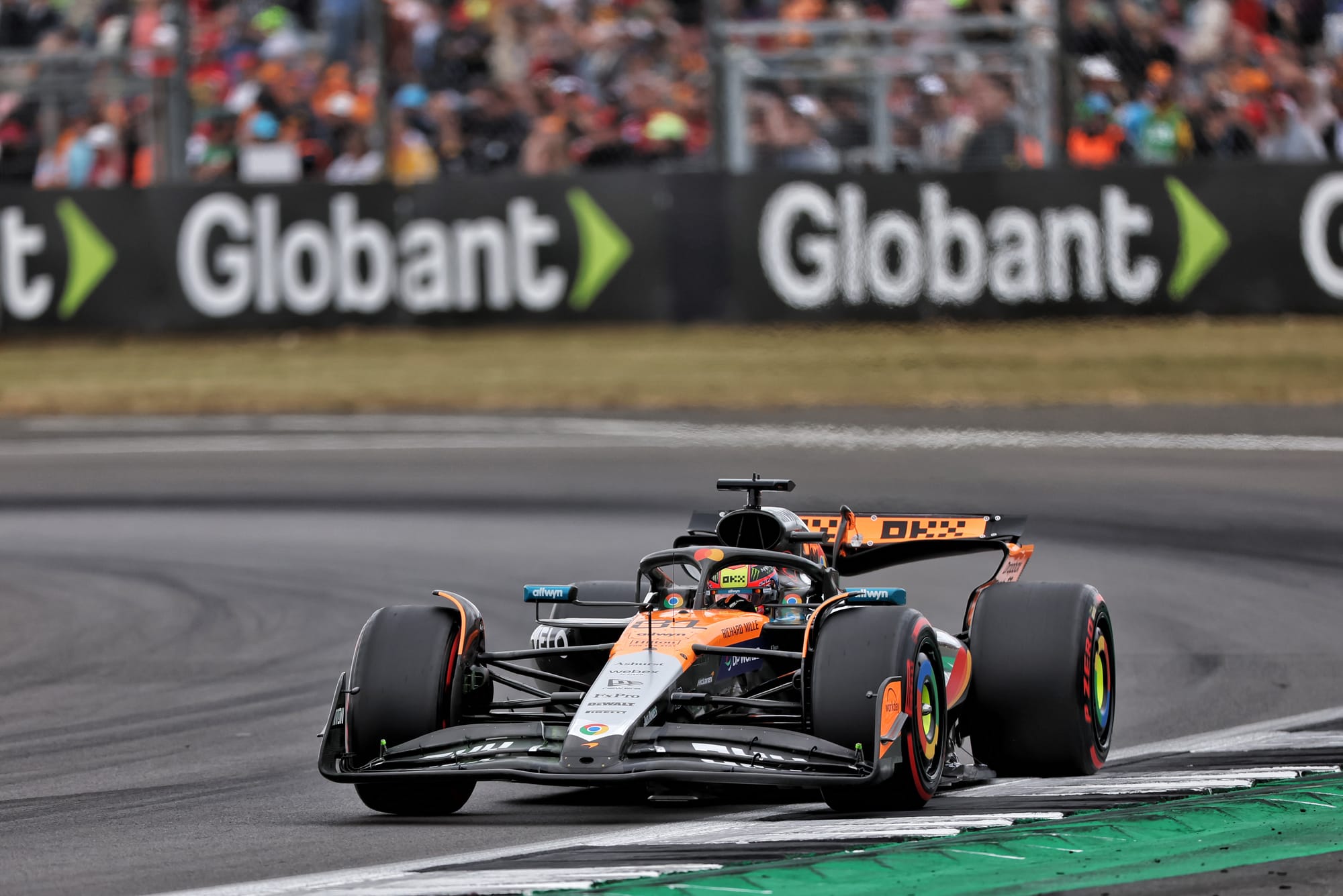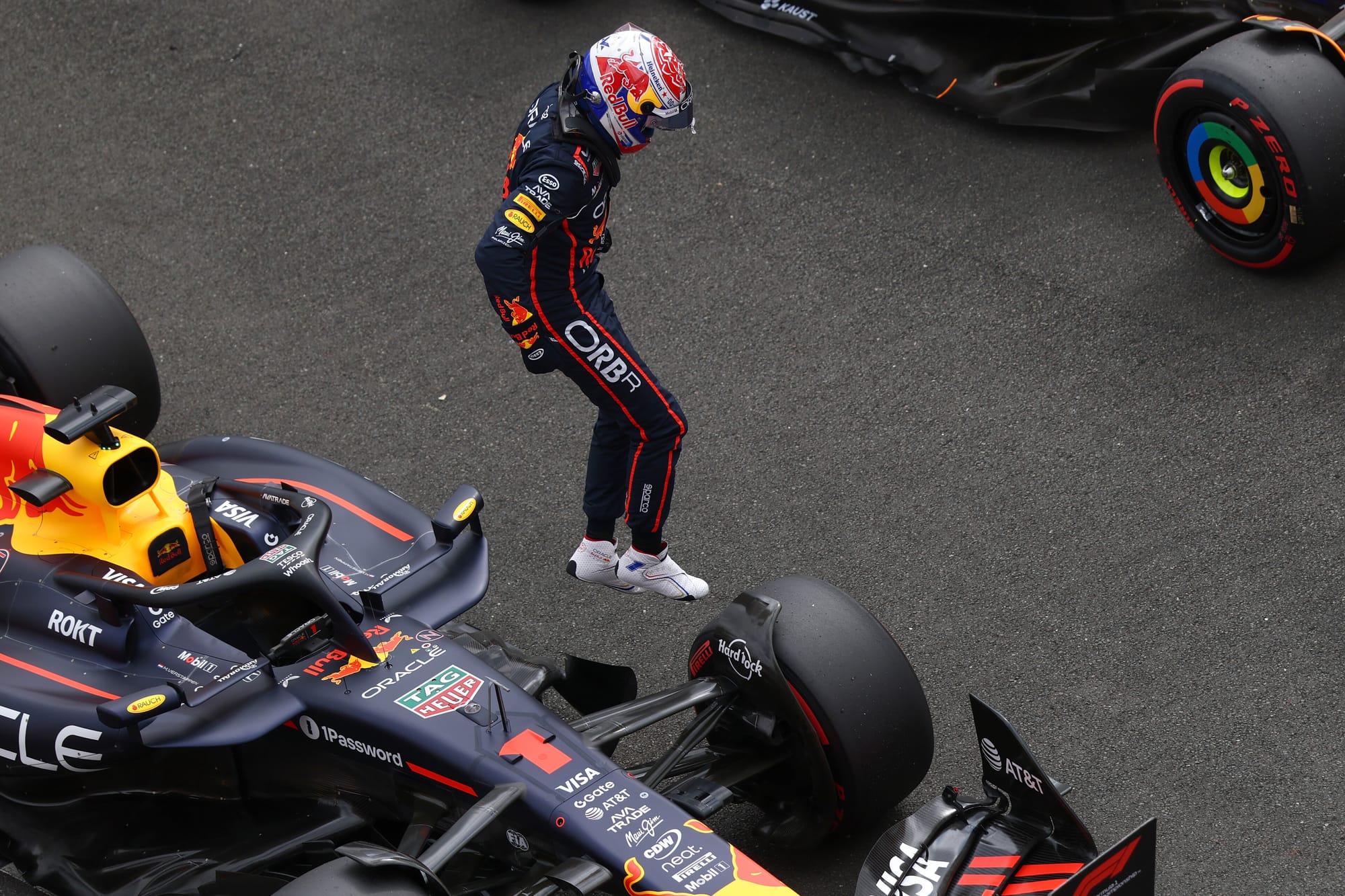Maybe if Max Verstappen's Red Bull, with its new floor, had not been so ill-balanced on Friday at the British Grand Prix he'd not have made the big rear wing reduction for Saturday almost in desperation.
And had he not done that, he may not have had a car he could fly in to one of those special Verstappen Formula 1 poles, where there is a tiny window of opportunity and he slots through it like he's laser-guided.

Because even though Silverstone is very much a low-downforce sort of track and has been for a few years, as corners such as Abbey and Copse have become just kinks in the straights, so a super-low wing such as his requires such a special skill to maintain good speed through Maggotts/Becketts, Stowe etc.
That in combination with the straightline gain opened up that window. Just a crack. But that’s all he needs.
Had he been less displeased with the car on Friday and stuck with the original choice, maybe he'd just have been more comfortable through those corners at the same speed and slower on the straights. We'll never know. But it was another special performance, one which left McLaren's Oscar Piastri and Lando Norris needing to deliver perfect laps to beat him - and neither did, lining up second and third, just ahead of George Russell's Mercedes and the Lewis Hamilton/Charles Leclerc Ferrari third row.
Verstappen described the Friday car as being "very difficult to balance".
"In some corners I was understeering to the moon but in other parts of the corner it would still be oversteering," he said. "So the lower wing was part of a set-up change we made overnight which allowed me to push.”
"It was a brilliant lap by Max," said an admiring Christian Horner. "Yesterday we brought some new parts [for the floor] which were giving us what we wanted [in terms of downforce] but out of balance. The team did a great job overnight to give Max a car he could lean on." The new floor was retained and the car rebalanced around the smaller wing, which was virtually a Monza wing.

"It was impressive how much speed Max could carry through the high-speed corners despite the low wing," said Piastri. Here he's referring to Maggotts/Becketts and Stowe essentially, corners where the McLaren would normally be expected to have carried a bigger advantage than it did, given the respective wing levels.
Some of that can just be put down to Verstappen's innate feel. But not quite all - as McLaren's Andrea Stella explained.
"The direction of the wind was really favourable to a low wing," he said, "because it meant the high-speed sections were relatively easy. It meant you could afford the smaller wing which otherwise would have lost you too much time [with] between the exit of Turn 7 [Luffield] and Turn 15 [Stowe]."
So although Verstappen and Red Bull opted for the wing for reasons of balance, they were further rewarded by the capricious Silverstone wind changing direction on Saturday to give a headwind through that crucial Maggotts/Becketts sequence and into Stowe. With Copse flat for everyone, it meant that the Red Bull's straightline advantage down the old pit straight carried all the way through Copse and continued up to Maggotts/Becketts, without then suffering an undue punishment.
"But even so," added Stella, "for that to work you still need a car which is very efficient in the drag-downforce relationship at that very low level of wing - and Red Bull has clearly done a very good job with this."
That was the tiny window through which Verstappen so brilliantly slotted - and the team put him out at the very last moment to maximise any track grip ramp-up.
The McLaren is not at its best in cool conditions and seems more adversely effected by the wind than the Red Bull and Ferrari. Yet it should still, on merit, probably have been on pole.

Piastri got too hard over the Stowe exit kerb on his first run, giving what was described as a "small deterioration in aero performance of the floor" which he carried into his final run. But that first run was a super lap, "so good I was wracking my brains trying to work out where I could find more time". When he tried, it just wasn't there, and the messier final lap was finished completely as he suffered a big sideways moment out of Vale.
Norris had a few seconds earlier taken too much kerb into the first part of the same sequence and there went another 'if only'. But we're talking hundredths of a second. The McLaren was fastest through the fast corners, the Red Bull fastest down the straights, and the Ferrari the best in the slow corners.
Russell's fourth-fastest time in the Mercedes, just over 0.1s off Verstappen, was a great out-of-the blue, scruff-of-the neck final attempt, the car still not really enjoying the high energy input into the tyres of this place. The cooler track helped in that regard but didn't cure its problems.
"We knew pole would be tricky," said McLaren's Zak Brown, "but we thought we'd lose it to Ferrari." The Ferrari had indeed looked truly formidable throughout the weekend and Hamilton and Leclerc had gone 1-2 in Q2, a couple of tenths ahead of Norris.
But there was virtually no gain into Q3 as everyone switched to the highest power unit modes. Verstappen found 0.5s, Piastri 0.3s, Norris 0.25s, Russell 0.6s. But the Ferraris found nothing, for what is believed to have been a power unit issue at the highest mode triggering excessive temperatures (see Jon Noble's piece).
A brilliant, vivid, typically Silverstone, qualifying session. Let's hope the uncertainty carries through into race day.





